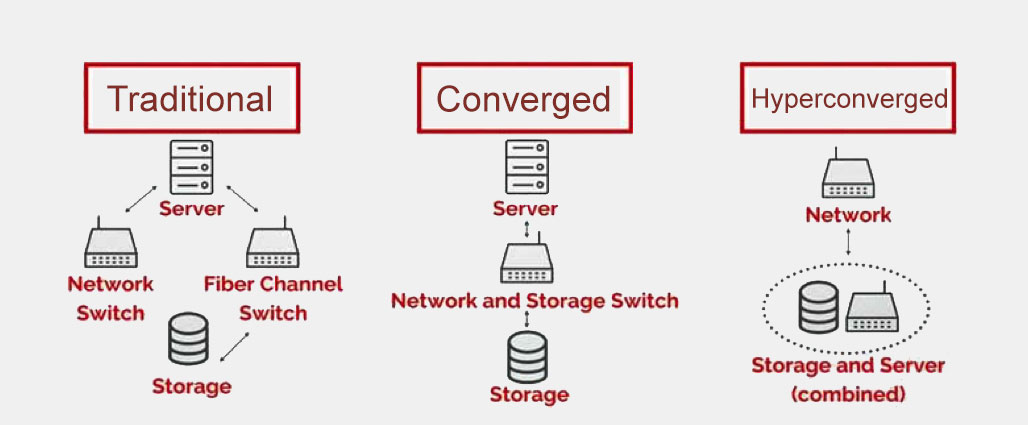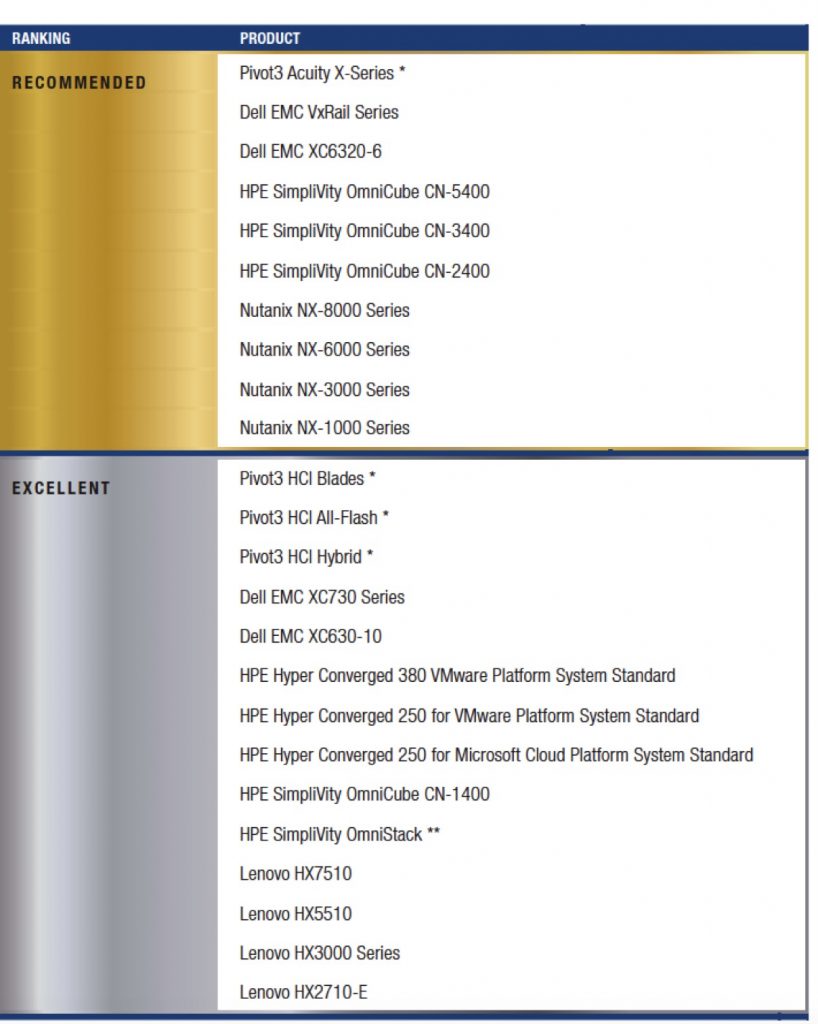Best Hyper-Converged (HCI) Solutions for 2022
With CI, IT parts are consolidated into a single, optimized platform with central management. This improves both dexterity and effectiveness. It likewise helps to reduce costs due to increased utilization. Due to the fact that everything is supplied by a single vendor or a vendor and its partners, compatibility concerns are handily removed. This is yet another way CI assists to keep expenses in check and enhance the management of data centers.
CI removes silos of technology, processes, and individuals. Silos are mostly why standard information center management has actually been convoluted and tough. CI is a big action towards simpleness and ease of management. CI enables organizations to design, develop, and maintain specific segments of a virtualization stack while supporting an on-demand development design.
On the planet of data center management, CI was an advancement. Still, it is constantly developing and being enhanced upon. The next generation of CI gathers compute, SAN, and storage performance into modular devices that are based upon product x86 hardware. This hardware can be scaled out by adding extra home appliance nodes.
HCI deals, by far, the finest worth for pimodules.com a very easy reason: design, shipment, and assistance are all dealt with by a single vendor. The simplest method to distinguish CI from HCI? Assembled architecture takes a hardware-focused, building-block technique. Hyperconverged architecture is software-defined. CI includes building blocks. Each of the elements in among these structure blocks is discrete and can be utilized on its own for its designated function.
With HCI, the technology is software-defined. All of the innovation is totally incorporated, which indicates that it can not be broken down into separate components. Likewise known as ultra-converged infrastructure, hyperconverged facilities is extensively considered the future of information center design. In this approach, software application controls all of the resources that are atop the hypervisor.
Converged vs Hyperconverged Infrastructure
HCI systems can be deployed on any sort of hypervisor or any piece of hardware through: Virtual maker translation innovations APIs You can produce your own CI platform by releasing overlying software application that allows you to handle compute and storage. As a perk, if a second location is running a various hypervisor, convergence software can translating virtual makers from one hypervisor to the otheryou just need to fulfill the underlying hardware requirements.
No wonder HCI is gaining popularity! To understand the innovation more completely, let’s look at the many advantages of HCI: Minimized functional costs (and TCO) likewise reduce or correct interoperability and complexity concerns. Streamlined acquisition, implementation, assistance, and www.thehashishinn.com management of the solution both lowers costs and increases staff productivity, possibly driving profitability.
Less moving parts suggests that there are less opportunities for hardware issues. All IT services and infrastructure are combined below the hypervisor Hyper-converged infrastructure vs NAS and SAN shared storage within a single, shared pool of x86 resources. HCI provides a scalable, building-block technique that you can quickly expandjust include more units. With a single user interface, you can centrally manage all virtual environments globally.
It likewise decreases the threat of over-provisioning and over-purchasing. HCI enables for exceptionally effective use of resources by saving IOPS, getting rid of duplicate services and devices, https://dev.I-Smartcloud.com/index.php/forum/profile/larhondategg253/ and offloading intensive processing from x86 processors, making sure that maximum CPU resources are readily available at all times. HCI shifts management over to apps and virtual devices, resulting in higher movement.
 Hyper-Converged Infrastructure vs Converged Infrastructure FS Community
Hyper-Converged Infrastructure vs Converged Infrastructure FS CommunityTop 5 vendors to explore for hyperconverged infrastructure
.
CI makes good sense in lots of circumstances but might not be the right option for others. Organizations that have an interest in CI ought to weigh the benefits and expenses to gain a clear understanding of what is involved before starting. Here’s a couple of circumstances where CI might be the perfect fit: Deploying new tier-one applications or when virtualizing applications Managing remote or branch office (ROBO) facilities Managing remote catastrophe recovery sites Participating in information center combination, whether within or across data centers Executing virtual desktop facilities (VDI) Performing data migration within or throughout websites Evaluating or establishing infrastructure The above list is by no means thorough, but it does start to show the large range of applications for CI.
What is Hyperconverged Infrastructure?
There are a few various ways to implement CI. Here are the most common approaches. With this approach, the vendor supplies the client with pre-tested suggestions about how to use hardware elements in their information center to fulfill requirements for particular workloads. With this alternative, the supplier provides the client with a single box that includes a securely integrated combination of storage, compute, virtualization, and networking resources from the vendor and, in many cases, Https://Thesaltdoll.Org/Community/Profile/Tamikawalker10/ the supplier’s partners.
In this situation, the supplier abstracts networking, calculate, and storage resources from the physical hardware. Virtualization software application is bundled with their CI offerings. In many circumstances, the vendor also supplies additional performance for catastrophe recovery and cloud bursting. This enables the admins to manage the virtual and physical facilities in a federated way via a single pane of glass.
Without a doubt, a brand-new or better generation will be available in the not-too-distant future.
Resource Type Select Resource Type Post Comparison Referral Datasheet Interactive 3D Tour Performance Criteria Result Preparation/ Execution Positioning Information Item Guide Recommendation Architecture Recommendation Info Solution Quick Video Browse Term Sort By Last Update Publish Date Significance Alphabetical.
Organizations have actually grown significantly dependent on innovation and standard storage location network (SAN)-based infrastructure struggles to stay up to date with today’s IT requires. It is intricate, troublesome to manage and can not scale as flexibly or efficiently to equal the quickly altering IT landscape. The outcome is IT teams spending too much time and cash provisioning, handling and preserving an infrastructure that does not fulfill current or future requirements.
What Is Hyperconverged Infrastructure?
In this blog site, we dive into HCI to understand how it works, its benefits and insights.enactor.co how modern-day companies like yours can benefit from an HCI solution. Hyperconvergence is an IT structure that integrates computing, storage, networking and virtualization innovation into a single system, frequently described as a «node.» A hyperconverged infrastructure is a software-defined system that unifies elements of a conventional data center: storage, computing, networking and management.
 What Is Hyperconverged Infrastructure? HCI Fundamentals
What Is Hyperconverged Infrastructure? HCI FundamentalsAs a software-defined platform, there are four primary software elements that make up an HCI platform: Storage virtualization: This is the process of abstracting physical storage from numerous storage devices in such a method that it seems a single storage gadget. Calculate virtualization: This is the process of producing a virtual version of hardware platforms, running systems, computer networks, storage devices, and so on.
Unified management: This allows storage, computing and networking resources, regardless of their physical area, to be situated, organized and provided to workloads. There is no definitive response as to when or where the term «hyperconverged facilities» was created or who came up with it. The concept of merging originally emerged to attend to the obstacles of the 3-2-1 architecture, which integrated hardware elements into clusters.
As dependence on technology grew, organizations required effectiveness, reliability and scalability to stay up to date with continuously changing business requirements, which conventional infrastructure might not offer. Hyperconverged infrastructure is an evolutionary action that resolves ever-growing information center intricacy and storage obstacles. While the origin of the term «hyperconverged infrastructure» is unknown, it is believed that Nutanix was the very first innovation company to bring to market an HCI-specific item in 2011 called Total Cluster.
